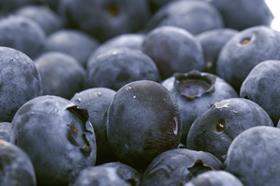
Chilean blueberry exports increased by 22 per cent in 2014/15 to end the season at just over 91,000 tonnes according to Asoex. With a 67 per cent share, North America (the US and Canada) remains the largest market and saw a 20 per cent increase in exports. However, shipments to Asia and Europe registered the highest growth, rising by 40 per cent and 27 per cent respectively.
“This growth in Asia is explained by the large increase in shipments to China (+ 45 per cent) and South Korea (+49 per cent), which reflects the efforts of the Chilean industry to develop postharvest technologies to allow the fruit to reach the market in good condition,” said Asoex president Ronald Bown.
Andrew Armstrong, executive director of the Chilean Blueberry Committee, said: “Although we failed to reach the 100,000 tonnes total predicted at the beginning of the season, the results are a new record, signalling the industry’s return to growth”.
Although the peak export season got underway one week earlier than usual, production was affected by the residual effects of the freeze of September 2013, which meant volume growth was somewhat lower than expected given the surge in new plantings. Another key feature this season was the later-than-expected finish thanks to a larger availability of export quality fruit at the end of the campaign due to favourable growing conditions in the south.
“Clearly this season had fewer surprises than last season and increased volume allowed us to better provide our target markets, and ultimately have a very positive season,” Armstrong said.
However, he added that the contraction of the Chinese economy and the uncertainty resulting from the much-publicised arrest of the boss of one of China’s leading importers negatively affected the Chinese market towards the latter stages of the season.
“In the case of Europe, the situation with the euro exchange rate also impacted our offer by mid-season. Finally in the US, port strikes on the West Coast, and lower demand due to climatic issues strongly affected the market in recent weeks,” Armstrong said.
He pointed out that the long-term outlook for the industry was positive thanks to the CBC’s efforts to boost consumption and open new export markets. However, he added that the economic slowdown in China, euro exchange rate and troubles in the Russian market would continue to pose challenges for the Chilean industry.
“It is also important to bear in mind that today competition is increasing. There is a productive growth in blueberry supplier countries, but also new players entering the market strongly,” Armstrong said. “It is therefore important to renew our varieties quickly and introduce better postharvest techniques in order to maintaining our position as the Southern Hemisphere’s leading exporter.”
Bown also highlighted the need to address issues with Chilean and US ports in order to prevent future disruptions to exports that could harm Chile’s reputation as a supplier.






No comments yet